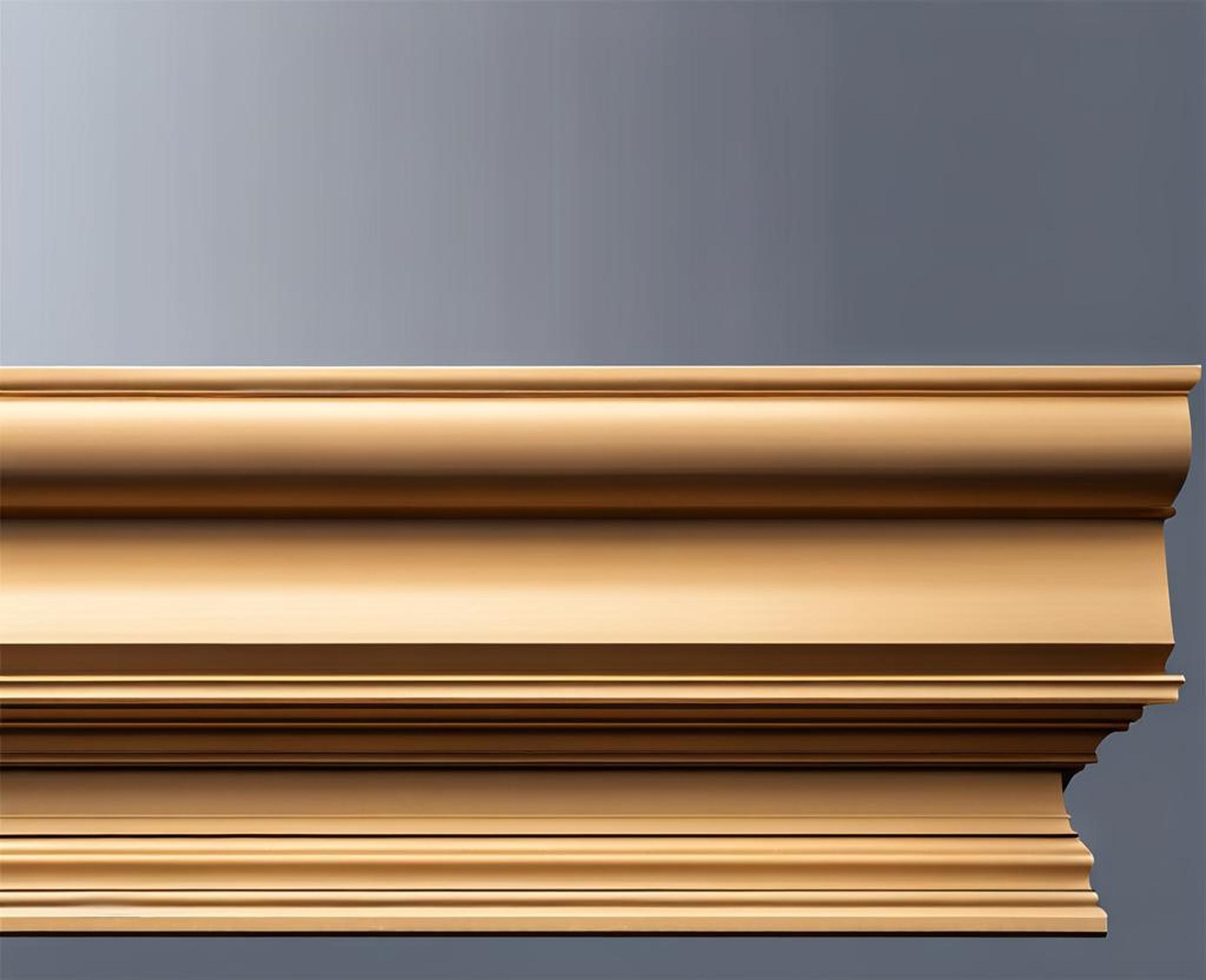When installing quarter round molding in your home, one of the biggest decisions is choosing the right width. Quarter round comes in a range of sizes, usually ranging from 1/4 inch up to 1 inch wide. The width you choose can impact the look, functionality and installation process. Read on as we break down the typical quarter round sizes and the factors to consider when selecting the perfect width for your space and style.
Typical Quarter Round Molding Widths
Quarter round molding comes in many common widths, though 3/4 inch and 1/2 inch tend to be the most popular options.
A 3/4 inch quarter round is the most commonly used size. It is generally installed along floor-wall junctures, especially when paired with 3/4 inch baseboard trim. The 3/4 inch size provides a noticeable and bold trim look.
1/2″ Width
1/2 inch quarter round molding is another very typical size. It is often used for door and window trim when the baseboard is 5/8 inch or 1/2 inch tall. The 1/2 inch width creates a more subtle and understated aesthetic.
1/4″ Width
On the smaller end, 1/4 inch quarter round is handy for tight awkward spaces like behind a toilet or vanity. It also complements smaller trim pieces like 1/4 inch quarter round shoe molding along the bottom of cabinets.

Larger Widths (1″+)
For a dramatic look, quarter round molding also comes in larger widths over 1 inch. However, sizes wider than 1 inch are less common. A chunky, oversized quarter round can create striking contrast next to your baseboard. But in smaller rooms, it may overwhelm the space.
Factors for Choosing Quarter Round Width
When selecting the ideal width for your quarter round molding, there are a few important considerations to keep in mind:
Room Size and Dimensions
The size and proportions of the room are one of the biggest factors in quarter round width. For larger, open concept rooms with high ceilings, a wider 1-inch quarter round can suit the grand dimensions. But for narrow hallways or small bathrooms, a slimmer 1/2-inch width prevents the trim from feeling oversized and bulky.
Existing Trim and Moldings
Your quarter round width should coordinate with any existing trim pieces like baseboard or door/window casing. A general rule is to match the height of your quarter round to the height of your baseboard. For example, use 1/2-inch quarter round with 1/2-inch tall base. Or opt for 3/4-inch quarter round if you have a 3/4-inch high baseboard.
Personal Style and Design Taste
The width of your quarter round also comes down to the aesthetic you want. Wider 3/4-inch or 1-inch quarter round makes a bold statement and pairs well with traditional, farmhouse or craftsman-style homes. More streamlined 1/2-inch quarter round has a simpler look suited to modern, minimalist spaces.
Where to Use Different Quarter Round Widths
Now that we’ve covered the typical sizes, here is a quick cheat sheet for which rooms suit different quarter round molding widths:
3/4″ Quarter Round
A 3/4 inch wide quarter round works well in larger living spaces with taller baseboards like:
- Living room
- Bedroom
- Dining room
- Family room
It also pairs nicely with 3/4 inch baseboard in entryways or hallways that are at least 8 feet tall.
1/2″ Quarter Round
The more understated 1/2 inch size is ideal for smaller rooms with simple baseboards, such as:
- Bathroom
- Kitchen
- Hallways
- Laundry room
It also works in bedrooms with shorter, 8 foot ceilings.
1/4″ Quarter Round
Lastly, the 1/4 inch slim size is great for tight, awkward spots like:
- Behind toilets
- Between cabinets and countertops
- Stair risers
Use it with any thinner trim pieces or in confined spaces.
Quarter Round Profile Shape and Thickness
Beyond choosing the width, also consider the profile shape and thickness of your quarter round molding:
Thickness
Quarter round molding comes in a range of thicknesses from 1/4 inch up to 1 inch thick. But the most readily available and common thickness is 1/2 inch. Thicker 3/4 inch molding provides a more substantial feel but is slightly more difficult to install around corners.
Profile
You’ll also want to select a rounded “bullnose” profile versus a square profile with a more defined corner. The rounded edge has a softer, contemporary look. While the square corner profile is more common in traditional or farmhouse design.
Cutting and Installing Quarter Round
Once you’ve selected the perfect width, it’s time to cut and install your quarter round trim. Here are some tips:
Measure Carefully
Always measure each section separately, even if they look identical. Walls and floors are rarely perfectly straight. Provide some extra length in case you need to recut any pieces.
Coped Joints vs. Mitered Joints
For inside corners, use a coping saw to cut coped joints for a tight seamless fit. On outside corners, miter the edges at a 45 degree angle.
Nail, Glue or Both
Gluing quarter round provides the strongest bond. Nailing allows for adjustment and filling any gaps. Often using both glue and nails ensures the most durable installation.
Fill Gaps and Caulk
Inspect for any gaps after installing and use wood putty to fill as needed. Run a bead of paintable silicone caulk along the top edge for a seamless look.
Choosing the ideal width for your quarter round molding may seem tricky. But following the proportions of your space and matching the trim sizes for a cohesive look are the two most important guidelines. The correct width comes down to the overall style you want – either bold or minimalist. Quarter round’s flexible sizing allows it to adapt beautifully to all different rooms and situations. Just take care when measuring and installing for smooth fitted trim results.
